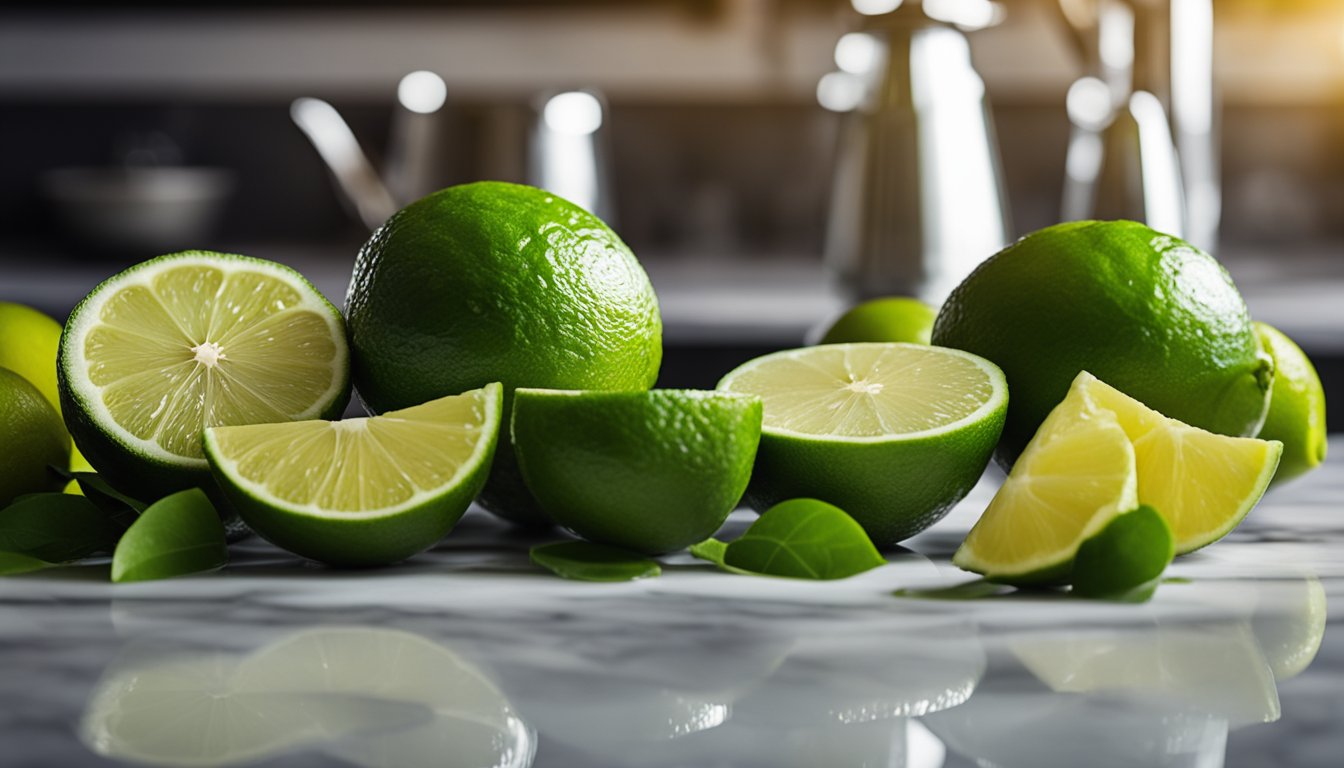Limes are a staple in kitchens and bars alike, but have you ever wondered just how much juice you can squeeze from one little fruit? Whether you’re whipping up a zesty guacamole or mixing the perfect margarita, knowing the juice yield of a lime can make all the difference.
Understanding Lime Juice
Lime juice plays a crucial role in cooking and mixology. It’s essential to grasp how much juice we can expect from these vibrant fruits.
Types of Limes
Limes come in various types, each with its unique characteristics. Persian limes, commonly found in stores, yield about 2 tablespoons of juice each. Key limes, smaller and more aromatic, contribute approximately 1-2 tablespoons. Making your beverage or dish stand out may require choosing the right type of lime.
Don’t forget about the calamondin lime. This petite powerhouse is not just a show-stopper in gardens but it also packs a tart punch, offering about 1 tablespoon of juice. Whether you’re whipping up a batch of key lime pie or mixing cocktails, knowing your limes can be a game-changer.
Nutritional Benefits of Lime Juice
Lime juice isn’t just a flavor enhancer; it’s a health booster too. Rich in vitamin C, it supports the immune system. Drinking lime juice can also aid digestion, add zest to your recipes, and keep scurvy at bay, who needs pirates’ curses when you’ve got lime juice?
Measuring Lime Juice
Understanding how much juice a lime contains is essential when prepping your culinary creations. This knowledge ensures your recipes shine with zest and flavor. Let’s dive into the specifics.
Average Juice Yield per Lime
Typically, a medium-sized lime yields about 1 to 2 tablespoons of juice. That’s roughly 15 to 30 milliliters. I’ve found Persian limes to be juicy little gems, while Key limes pack a punch with a bit less juice, giving around 1 tablespoon each. Calamondin limes? They’re tiny but mighty, offering just a teaspoon or so of juice. If you’re squeezing limes like a pro, knowing the average yield helps prevent those “oops, not enough juice” moments when mixing drinks or crafting dishes.
Factors Affecting Juice Quantity
Several factors play into how much juice you can extract from a lime. Size matters; larger limes tend to be juicier. Freshness makes a difference too; fresher limes usually yield more juice than those lounging around. Bruises or imperfections might interfere with juice flow, so check your limes before squeezing.
Uses of Lime Juice
Lime juice shines in a variety of applications. Its unique flavor profile makes it a staple in kitchens and wellness routines alike.
Culinary Uses
When cooking, lime juice adds a zesty twist to dishes. I love using it in guacamole – a splash of lime elevates the taste and brightens the flavors. In marinades, lime juice tenderizes meat while infusing it with vibrant notes. Ever tried a lime-infused salad dressing? It’s a game-changer! Lime juice also takes cocktails from ordinary to extraordinary. Margaritas, mojitos, or a refreshing lime soda, you can’t go wrong. You’ll often find it in desserts too; key lime pie is a delightful example where the acidity balances sweetness. Plus, it helps accentuate other ingredients, making them pop!
Before You Go – How Much Juice is in a Lime?
Understanding how much juice is in a lime can truly elevate your culinary creations. Whether you’re mixing a refreshing cocktail or preparing a zesty dish, knowing the juice yield helps you achieve the perfect balance of flavors.
With the distinct characteristics of different lime varieties, I can choose the right one for my needs. From the juiciness of Persian limes to the unique taste of Key limes each type offers something special.
Incorporating lime juice into my cooking not only enhances taste but also adds nutritional benefits. It’s a small ingredient that packs a powerful punch in both flavor and health. So next time you reach for a lime remember its potential to transform your recipes. Don’t forget to add The Herb Prof to your favorites so you don’t miss any new articles.
References – How Much Juice is in a Lime?
Little Herb Encyclopedia, by Jack Ritchason; N.D., Woodland Publishing Incorporated, 1995
The Ultimate Healing System, Course Manual, Copyright 1985, Don Lepore
Planetary Herbology, Michael Tierra, C.A., N.D., Lotus Press, 1988
Handbook of Medicinal Herbs, by James A. Duke, Pub. CRP Second Edition 2007
The Complete Medicinal Herbal, by Penelope Ody, Published by Dorling Kindersley
Check the Following Articles
Permaculture Zones: A Guide to Sustainable Gardening
Baking with Stevia for Healthier Treats: Delicious Guilt-Free
Best Grow Lights for Herbs: The Ultra Guide
Discover the Beauty and Benefits of Calendula Flowers
Frequently Asked Questions – How Much Juice is in a Lime?
What is the juice yield of a medium-sized lime?
A medium-sized lime typically yields about 1 to 2 tablespoons of juice. The exact amount can vary based on the lime’s size and freshness.
How do different types of limes compare in juice yield?
Persian limes are the juiciest, yielding about 2 tablespoons per lime. Key limes yield around 1 tablespoon, while calamondin limes produce approximately 1 teaspoon.
What factors affect the juice quantity from limes?
The size and freshness of the limes significantly affect juice yield. Bruises or imperfections on the skin can also hinder effective juice extraction.
How can lime juice enhance my cooking?
Lime juice enhances flavors in various dishes, tenderizes meat in marinades, and adds a zesty twist to cocktails and desserts, balancing sweetness with acidity.
What are the health benefits of lime juice?
Lime juice is rich in vitamin C, which supports digestion and boosts the immune system. Including lime juice in your diet can contribute to overall wellness.

